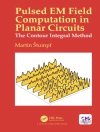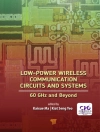Capturing, recording and broadcasting the voice is often difficult. Many factors must be taken into account and achieving a true representation is much more complex than one might think.
The capture devices such as the position of the singer(s) or narrator(s), the acoustics, atmosphere and equipment are just some of the physical aspects that need to be mastered. Then there is the passage through the analog or digital channel, which disrupts the audio signal, as well as the processes that are often required to enrich, improve or even transform the vocal timbre and tessitura. While in the past these processes were purely material, today digital technologies and software produce surprising results that every professional in recording and broadcasting should know how to master.
Recording and Voice Processing 2 focuses on live and studio voice recordings. It presents the various pieces of hardware and software necessary for voice recording, and details possible sound channel configurations based on recording location. An actual recording, and its various constraints, is then considered, addressing the pitfalls to avoid and the strategies to use in order to achieve a satisfactory result. Different special effects (vocoder, auto-tune, Melodyne, etc.) that can be used on the voice, whether spoken or sung, are also presented.
Inhaltsverzeichnis
Preface ix
Introduction xiii
Chapter 1. Processing Hardware and Software 1
1.1. The materials 1
1.1.1. The compressor 1
1.1.2. The equalizer 8
1.1.3. Reverberation and delay 11
1.1.4. The de-esser 19
1.1.5. The expander 21
1.1.6. The exciter or enhancer 23
1.2. The software 25
1.3. Conclusion 25
Chapter 2. Configuration and the Audio System 29
2.1. The capture and processing chain 29
2.1.1. Minimum configuration 29
2.1.2. Classic home studio configurations 31
2.1.3. Semi-professional configurations 32
2.2. Microphone preamplifiers 34
2.2.1. Tube preamplifiers 35
2.2.2. Transistor preamplifiers 36
2.2.3. Hybrid preamplifiers 37
2.2.4. Channel strips 38
2.2.5. The right choice 38
2.2.6. A selection of preamplifiers 38
2.3. Digital audio interfaces 41
2.4. Multi-channel headphone amplifiers 47
2.5. Monitoring speakers 49
2.5.1. Genelec 8000 series 51
2.5.2. Yamaha NS10-M 52
2.5.3. Scientelec ORTF 54
2.5.4. Studer series A 56
2.5.5. Elipson LA 4240 57
2.5.6. Focal Twin6 Be 58
2.5.7. NHT M-100 59
2.5.8. JBL 4310 60
2.5.9. Adam Audio AX series 62
2.5.10. Selecting active proximity speakers 63
2.5.11. A word about subwoofers 65
2.5.12. To conclude on the speakers 66
2.6. Amplifiers for passive speakers 67
2.6.1. Yamaha A100 68
2.6.2. Studer A68 69
2.6.3. Amcron DC 300A 69
2.6.4. Amcron D75 70
2.6.5. Yamaha PX3 71
2.7. Monitoring controllers 72
2.8. Conclusion 74
Chapter 3. Voice Recording 77
3.1. Artist, comfort and environment 77
3.2. The choice of microphone 79
3.2.1. The location 79
3.2.2. Microphone collection 93
3.2.3. Style and voice 98
3.2.4. Direction and color 99
3.3. Constraints and accessories 99
3.3.1. Nearby environment 100
3.3.2. Microphone suspension 100
3.3.3. Pop filter 101
3.3.4. Microphone stand and bracket 102
3.4. Positioning the microphone 103
3.5. Feedback 107
3.5.1. Voice feedback through headphones 108
3.5.2. Voice feedback through loudspeakers 110
3.5.3. Feedback and audio interface 111
3.6. The voice-only mix 114
3.6.1. A mix for which voice? 115
3.6.2. Comping 115
3.6.3. Editing and editing 116
3.6.4. Level balancing 116
3.6.5. Equalization 118
3.6.6. Sibilance suppression 121
3.6.7. Serial compression 122
3.6.8. Tone adjustment 124
3.6.9. Delay or reverberation 124
3.6.10. To finish with the voice-only mix 127
3.7. Recording multiple performers 128
3.8. Recording a choir 131
3.9. Recording a voice-over 133
3.10. Conclusion 134
Chapter 4. Special Effects 135
4.1. The vocoder 135
4.2. The talkbox 138
4.3. Auto-tune 140
4.4. Melodyne 142
4.5. Voice processors 144
4.6. Finally 146
Conclusion 147
Appendix 1. Sound Unit 151
Appendix 2. Audio Connectivity 159
Appendix 3. Audio Processing Plugins 169
Appendix 4. Microphone Pairs 175
Appendix 5. Types of Software Plugins 189
Glossary 191
References 199
Index 209
Über den Autor
Jean-Michel Reveillac is a Lecturer at the University of Burgundy, France, a consultant for large media companies and also runs a restoration, mixing and transcoding studio. He has been a specialist in sound processing for over 35 years.












